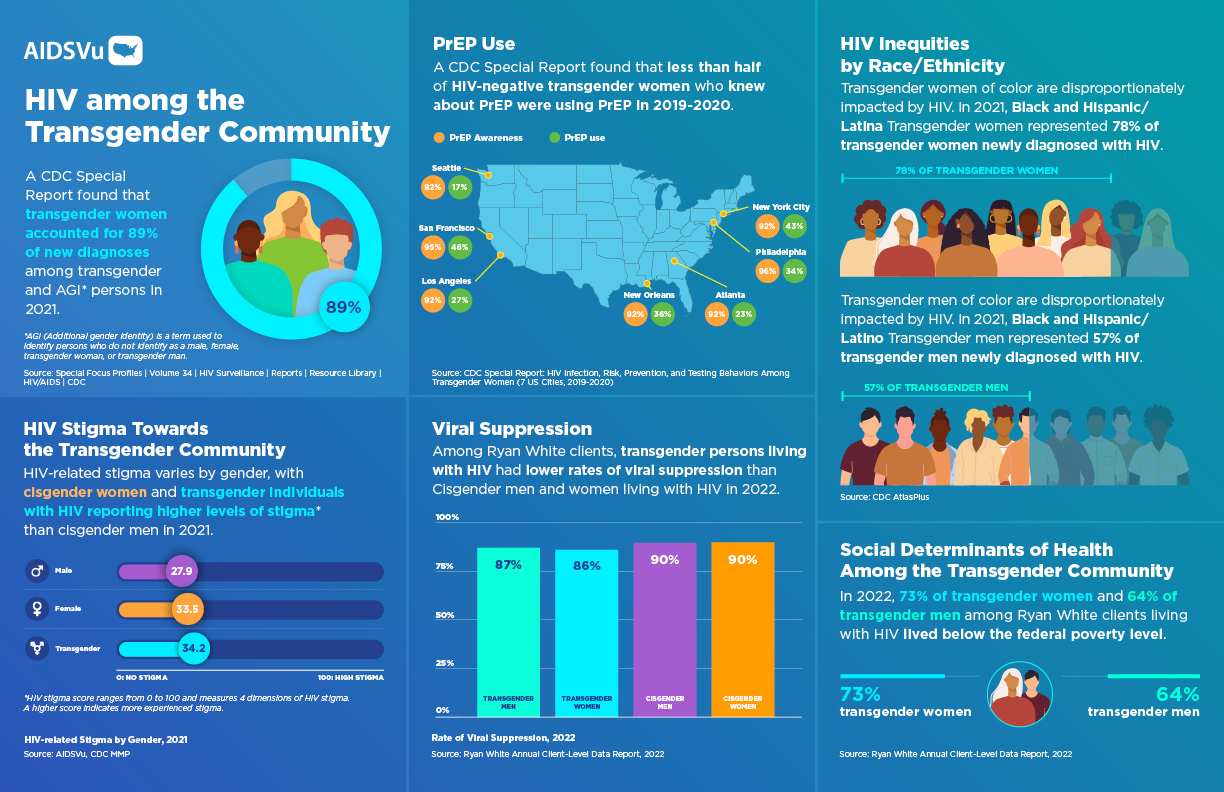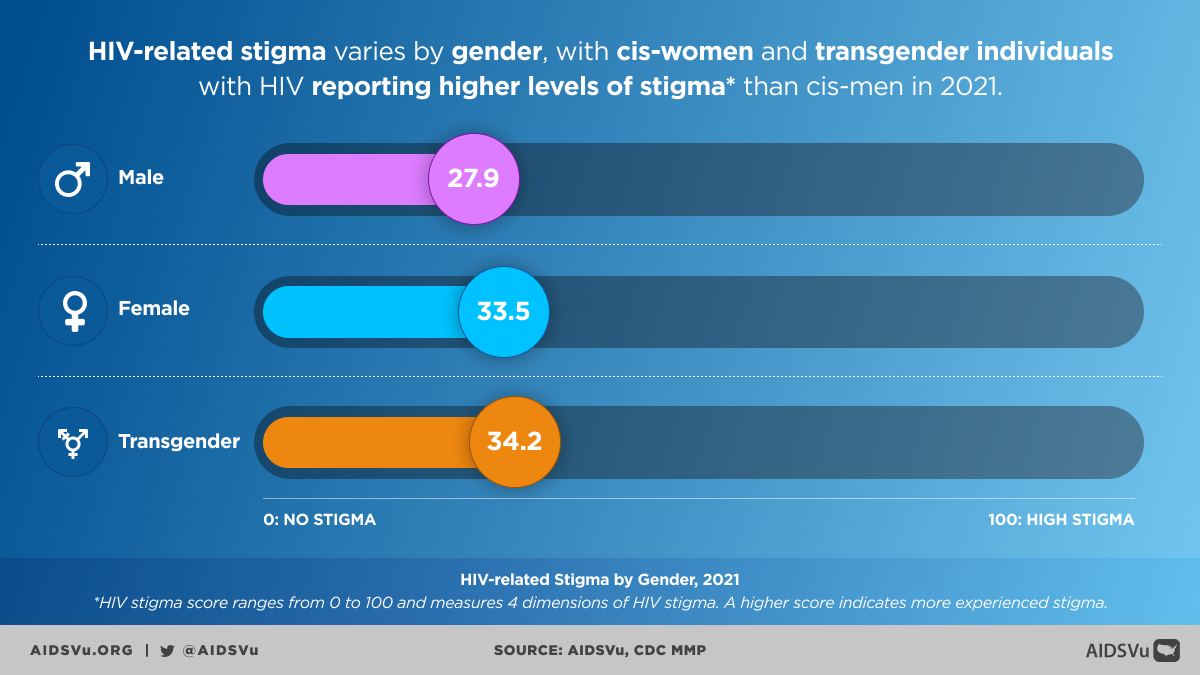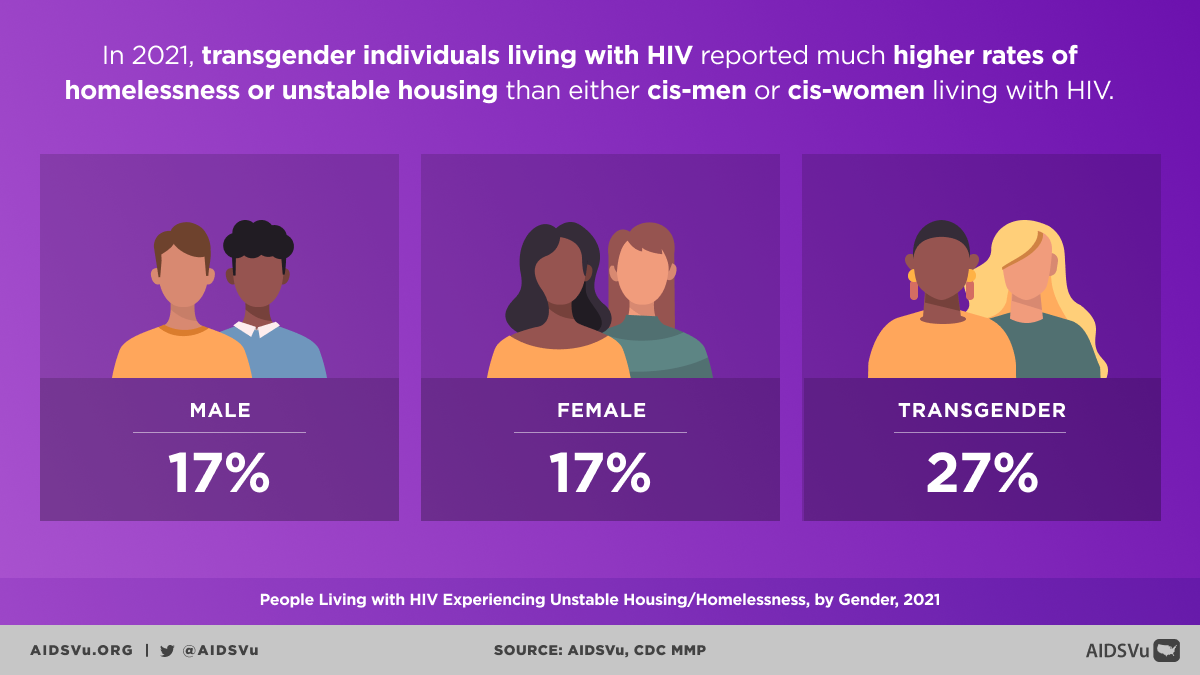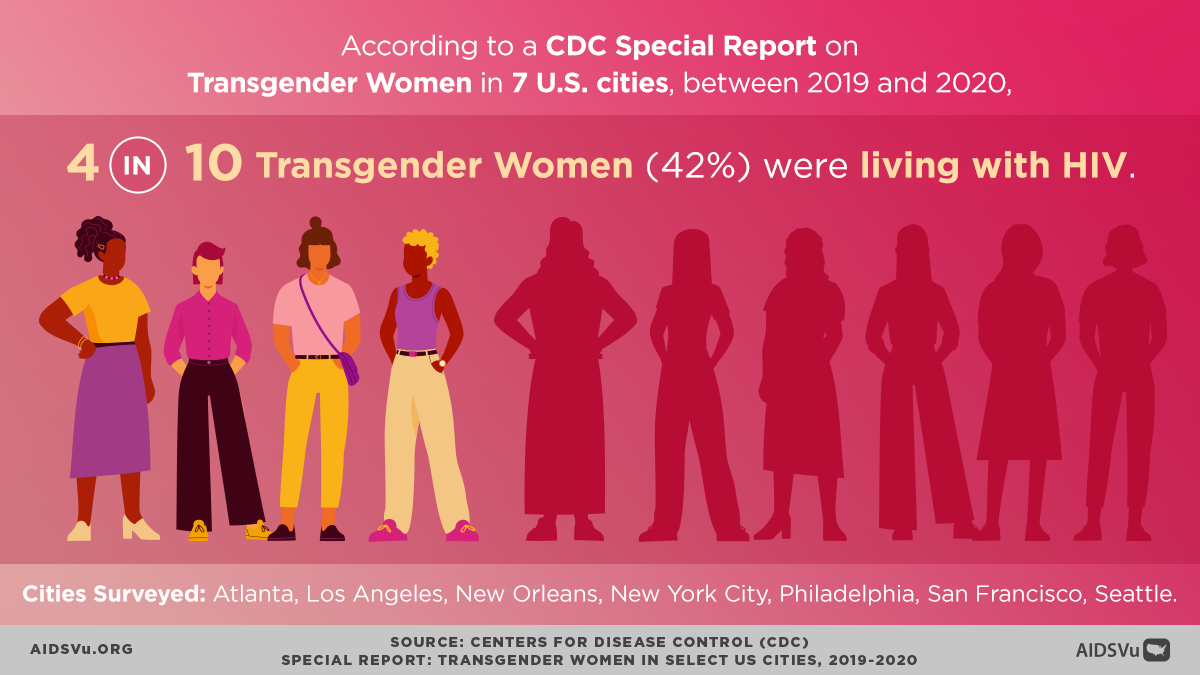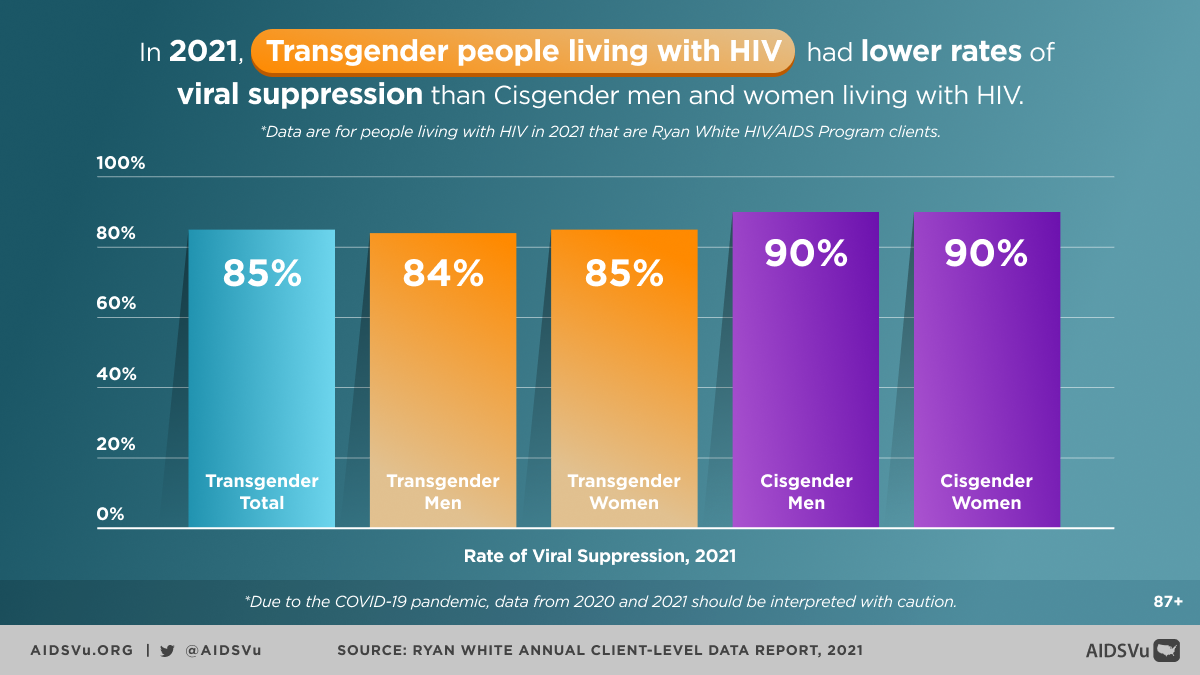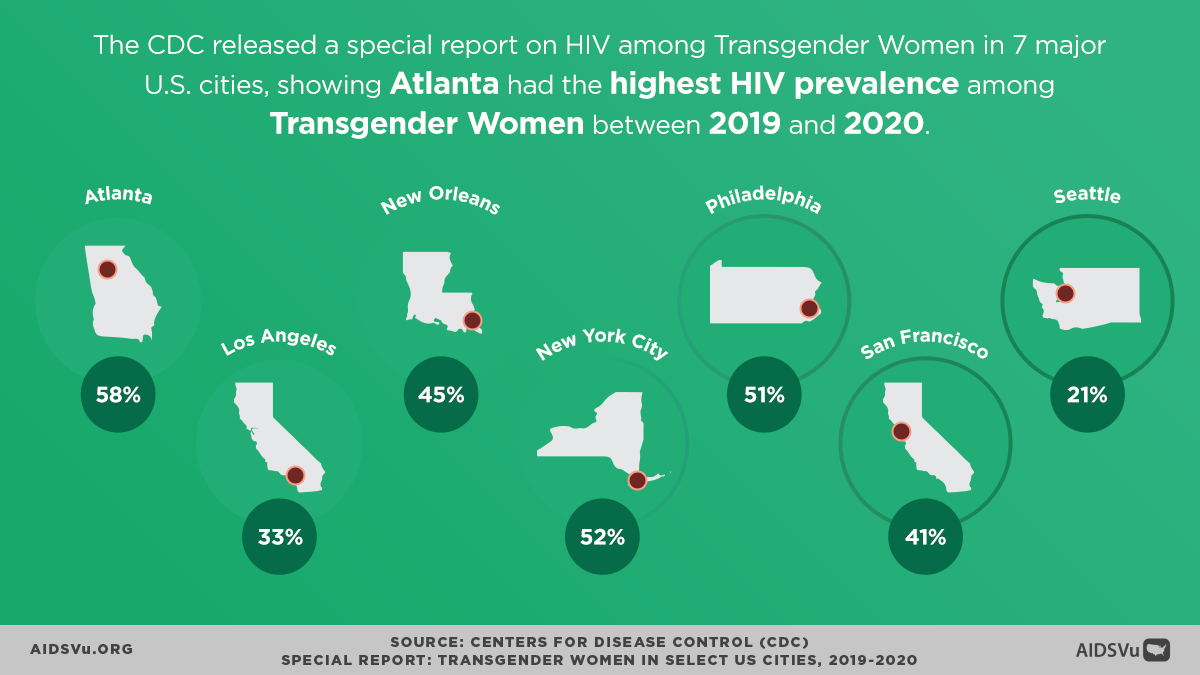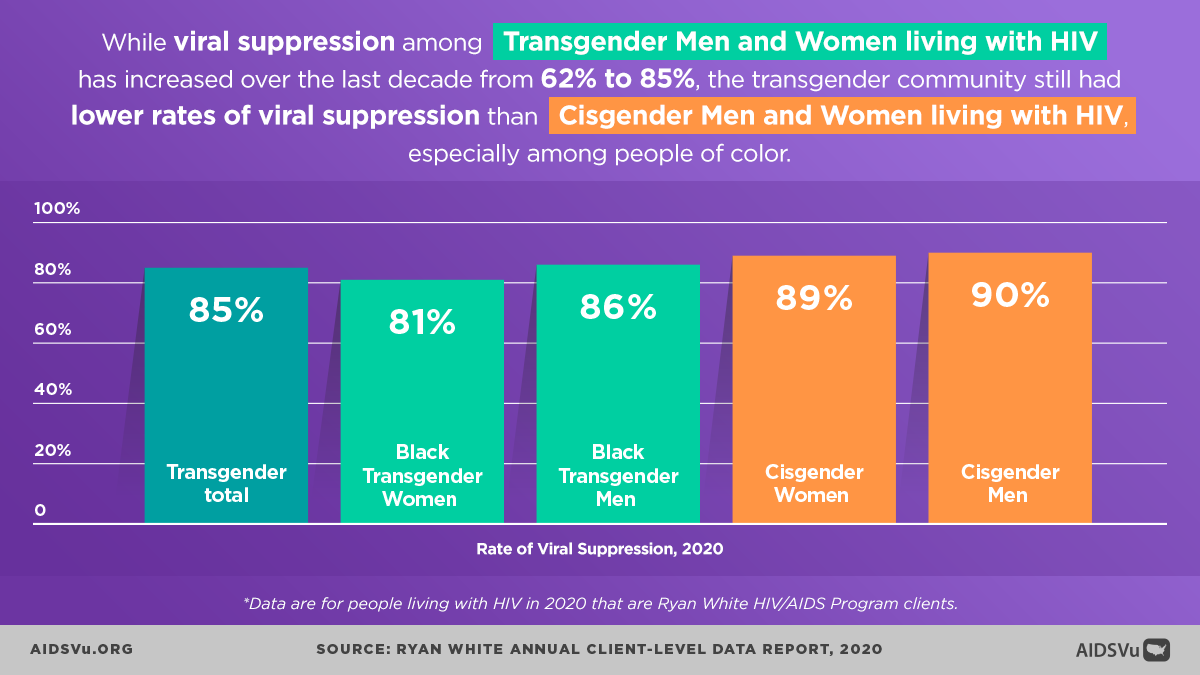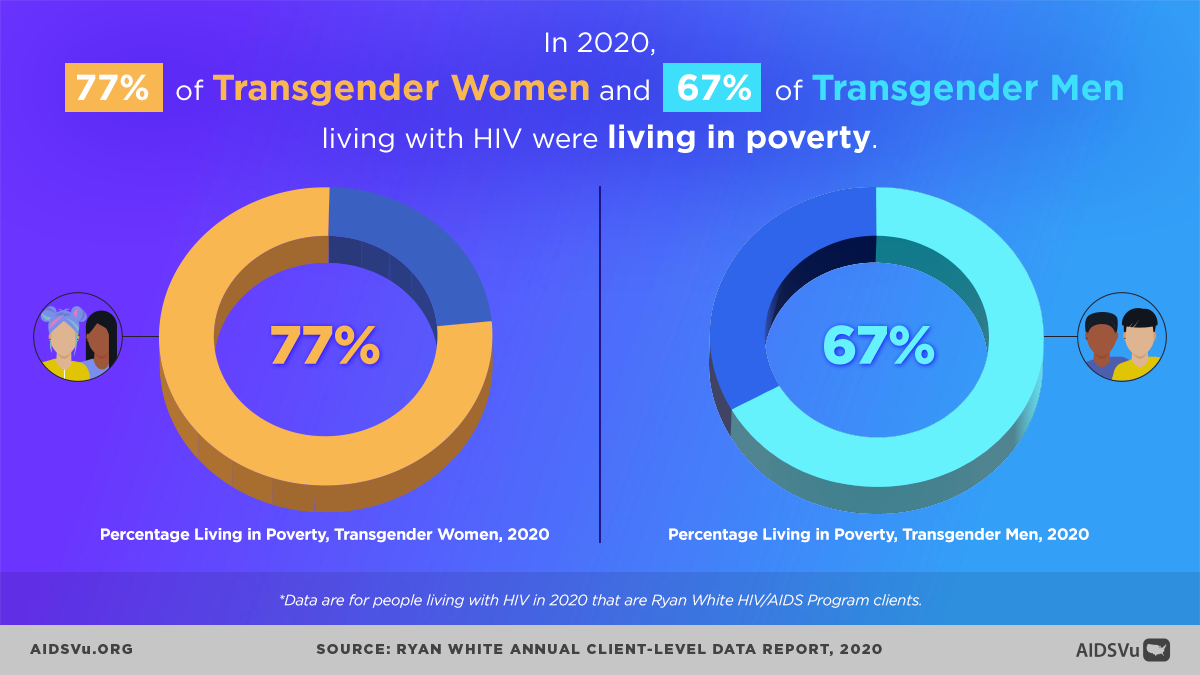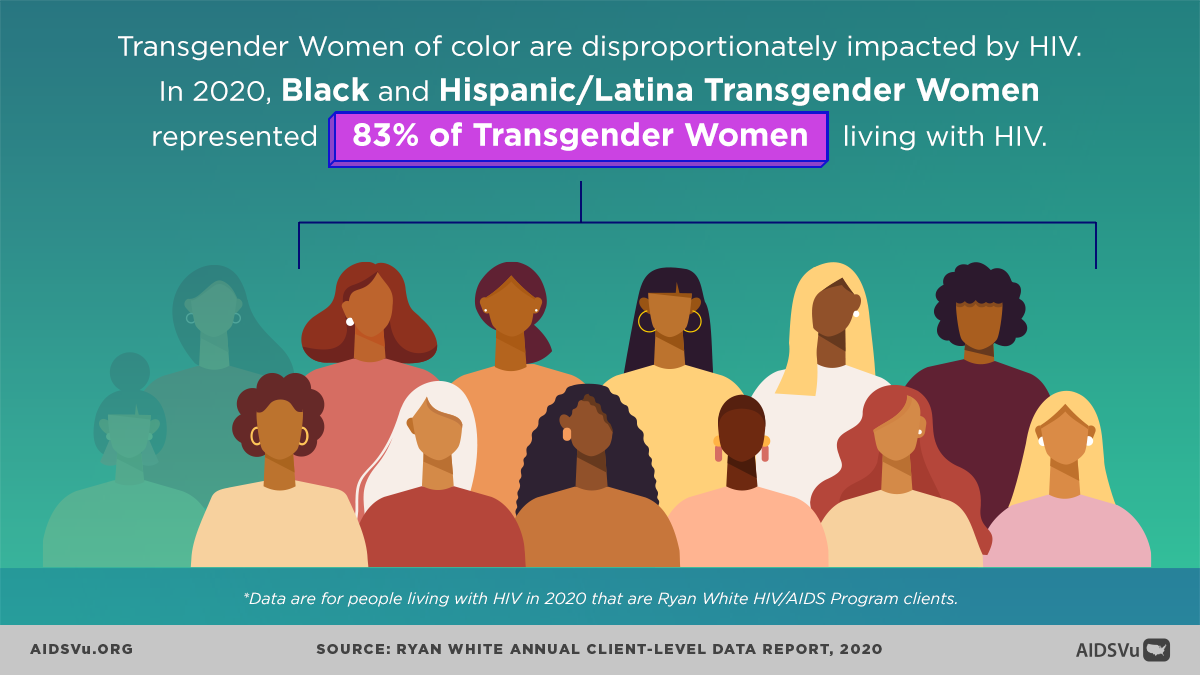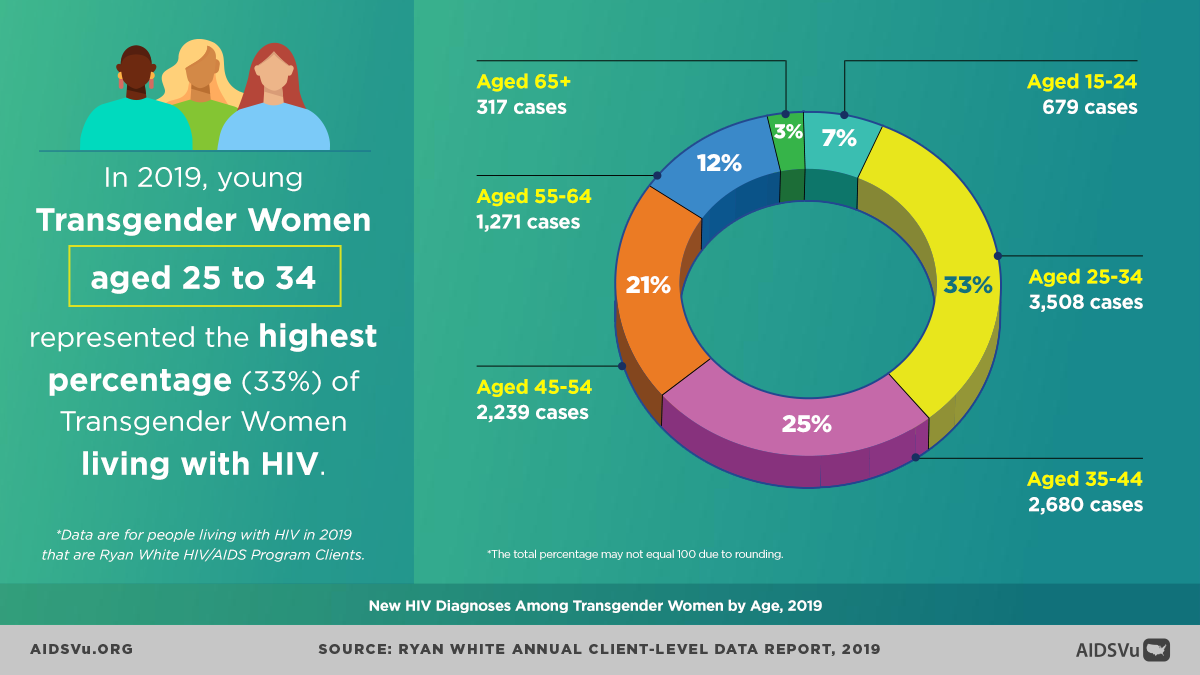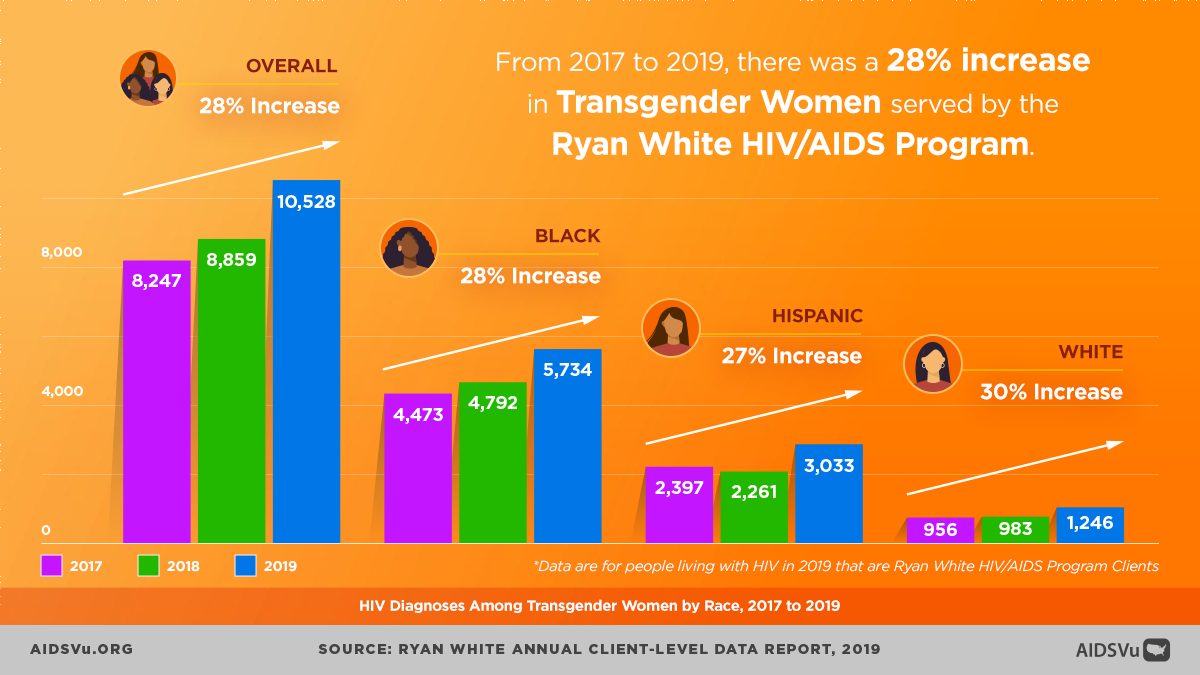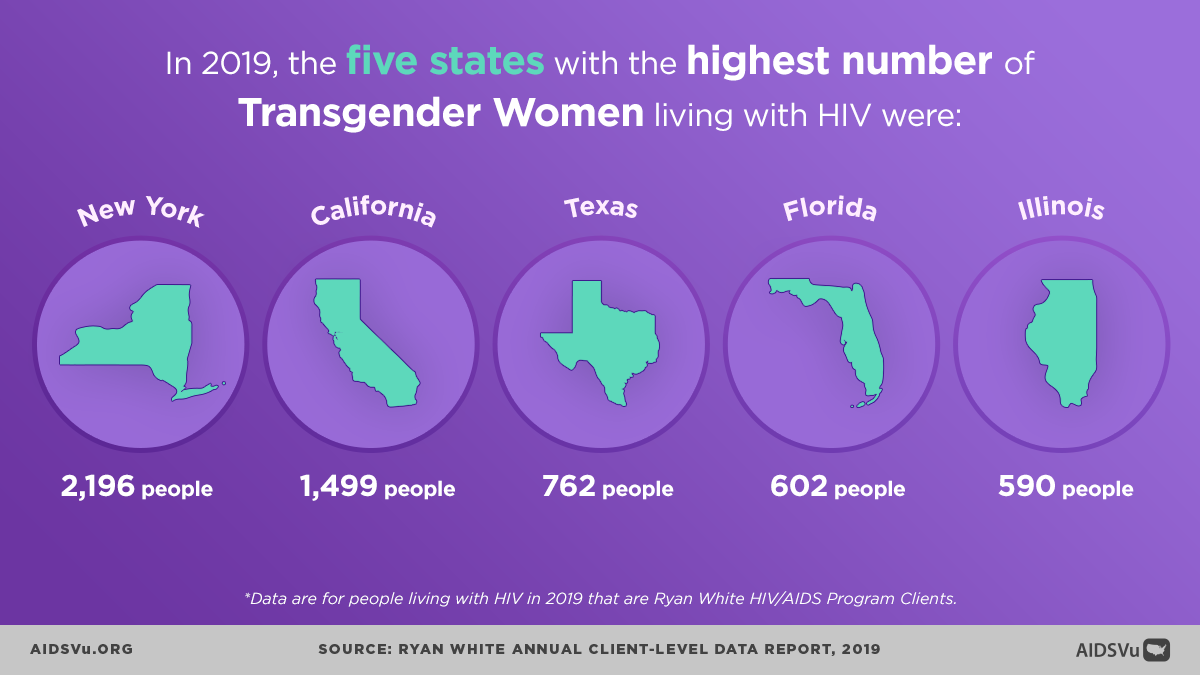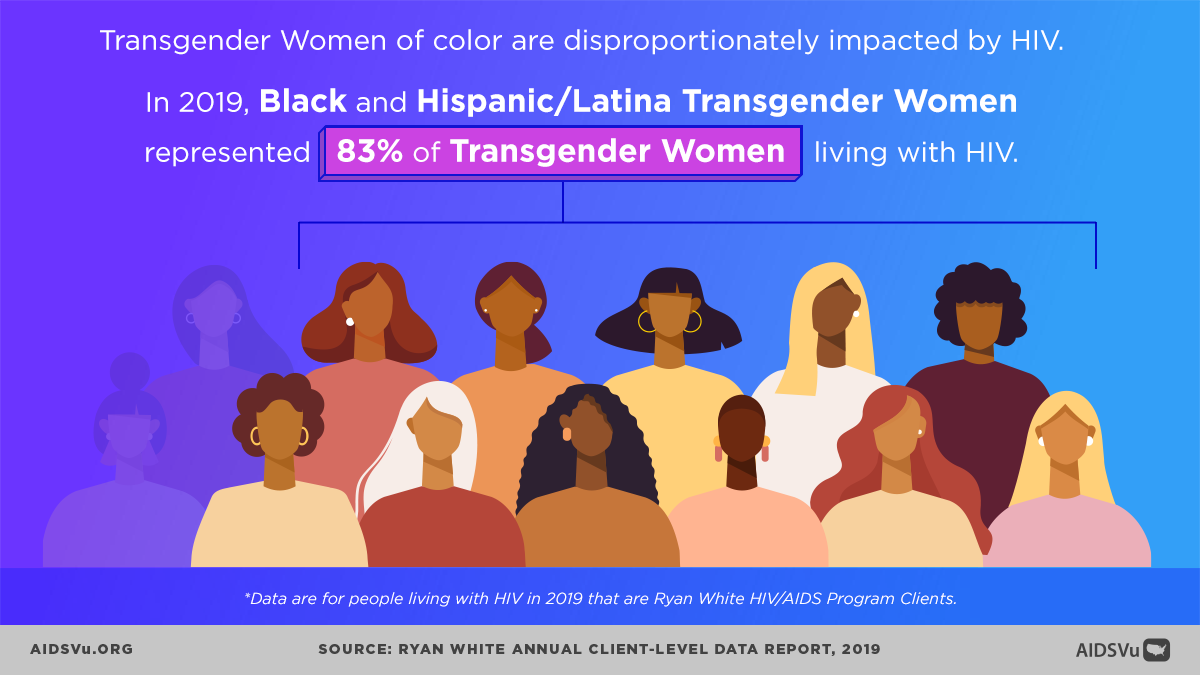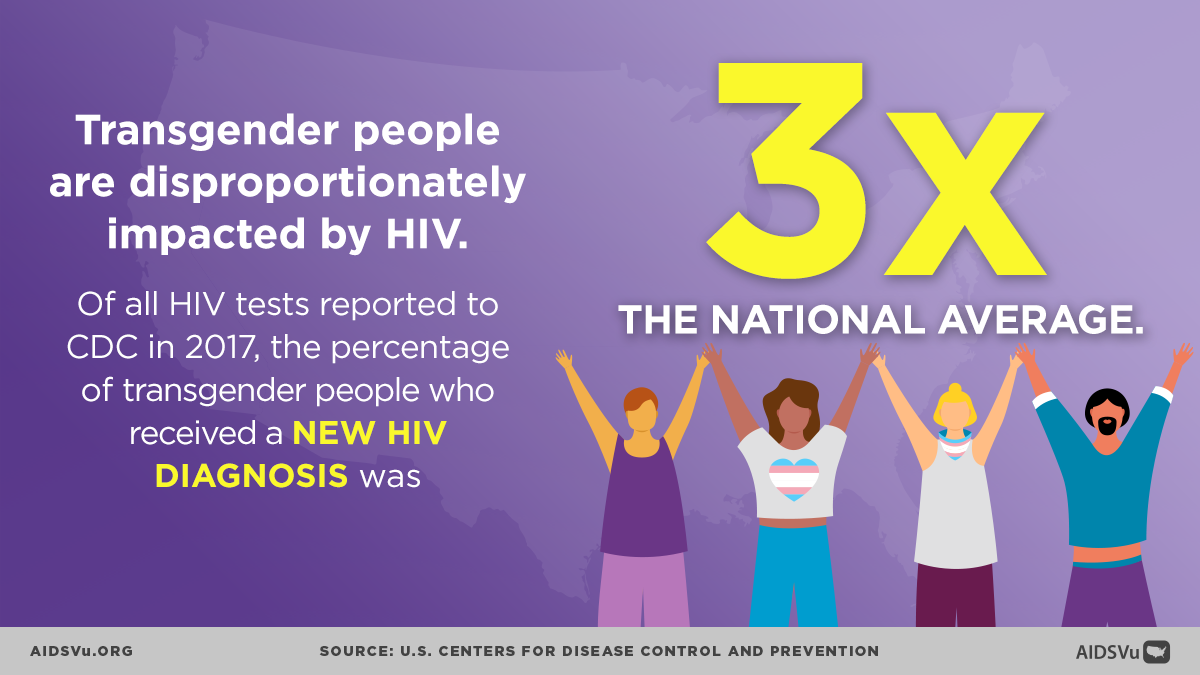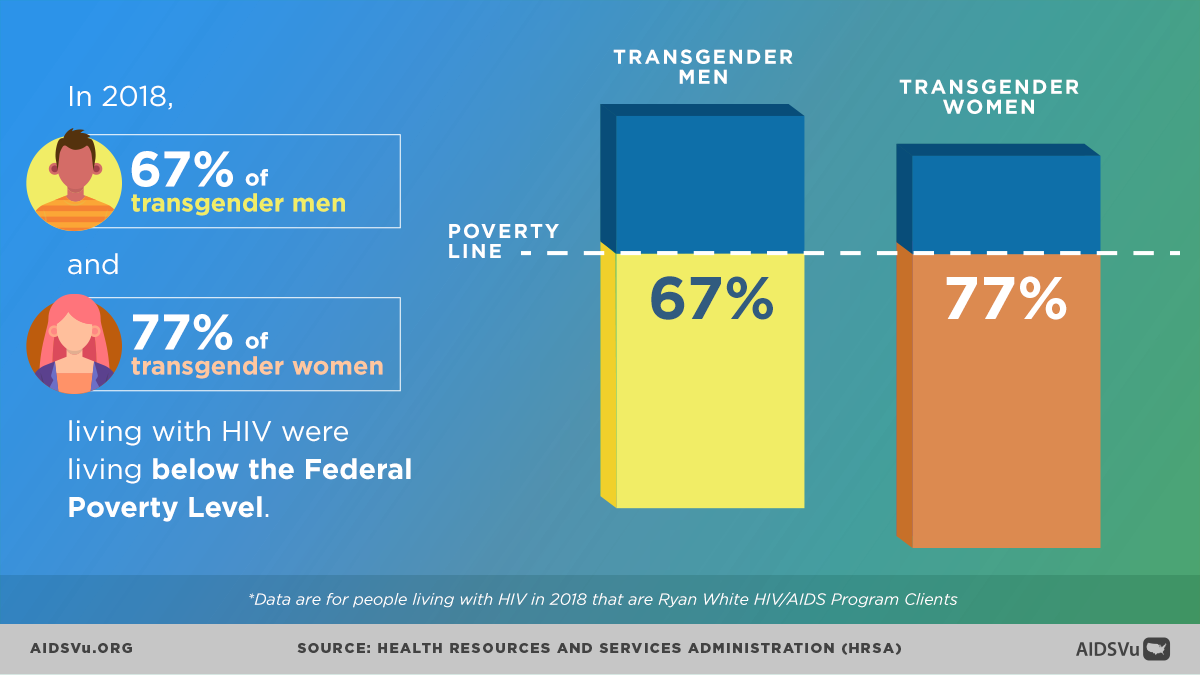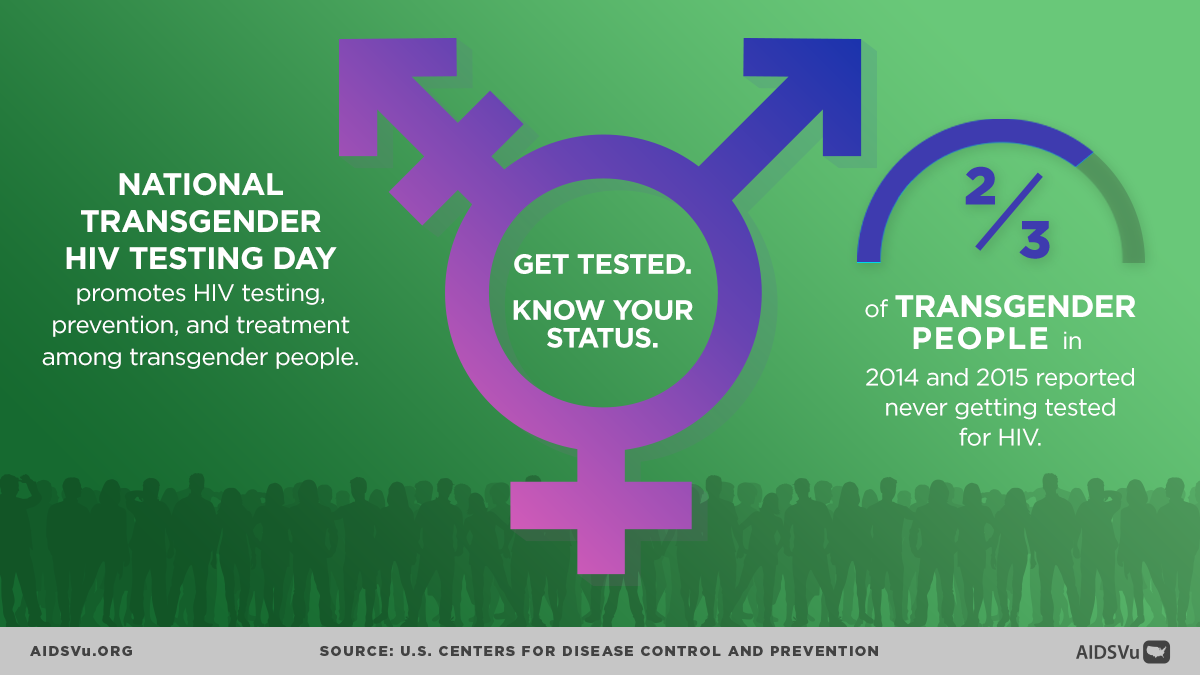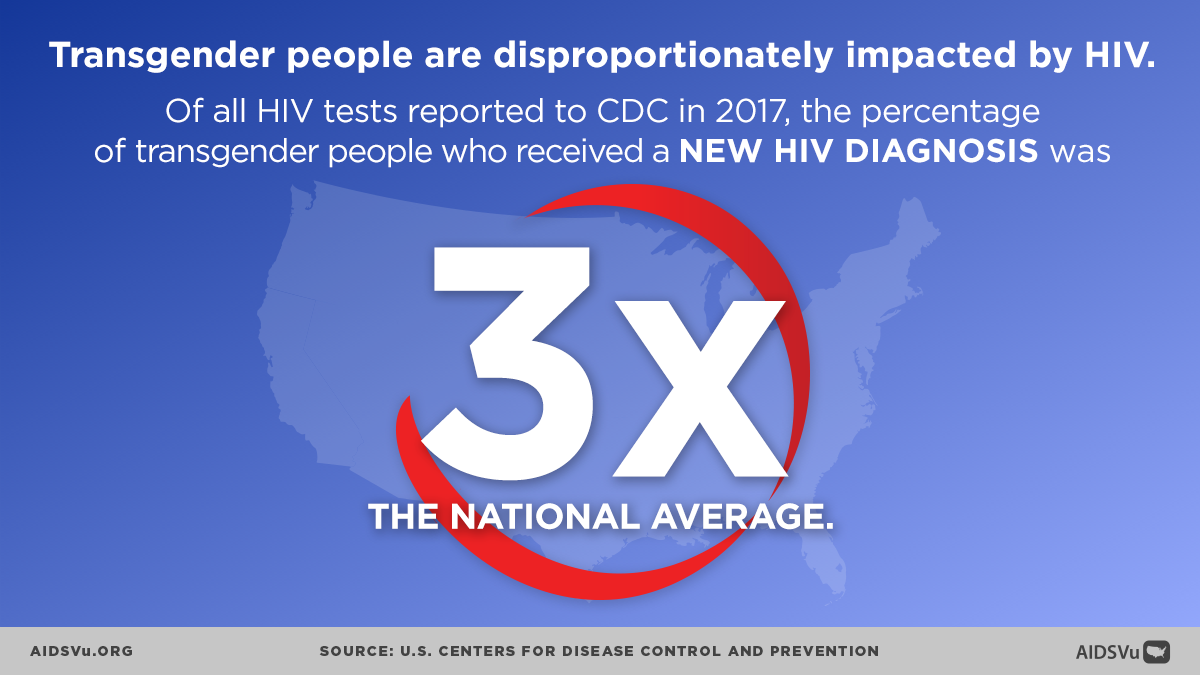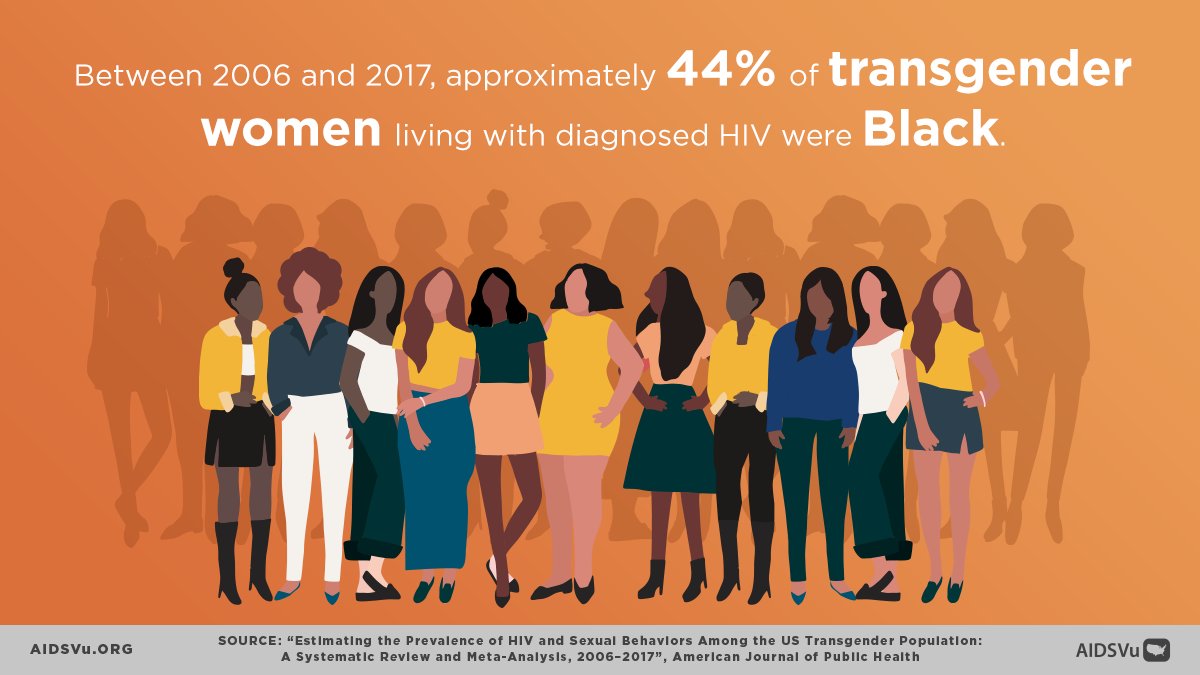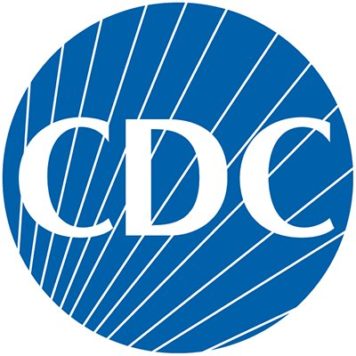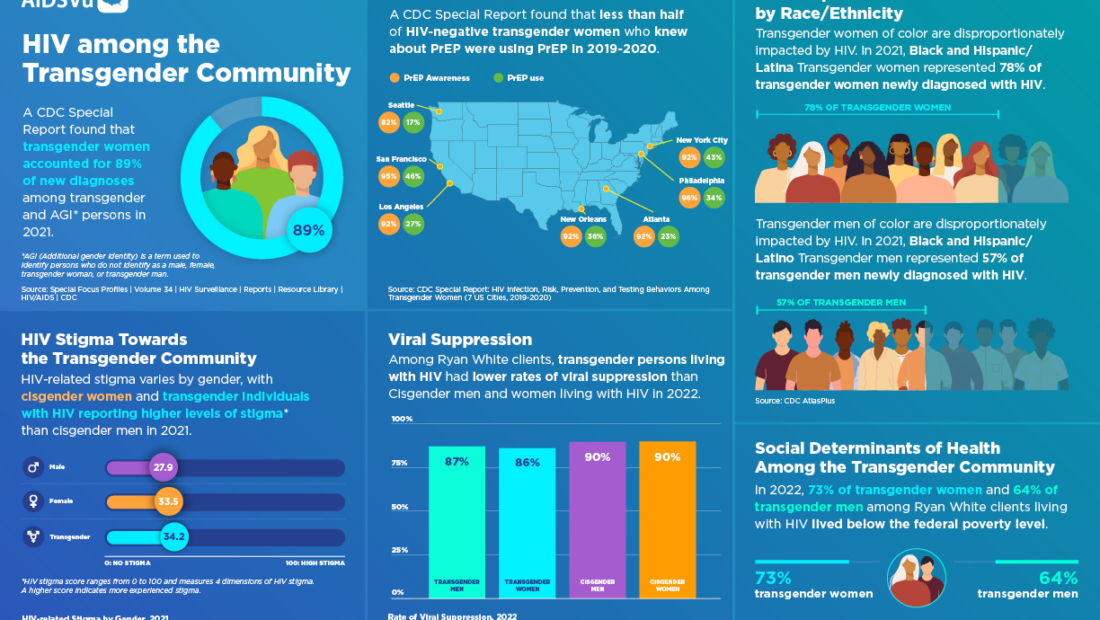
Transgender is an umbrella term for persons whose gender identity or expression (masculine, feminine, other) is different from their sex (male, female) at birth. Transgender people have long been subjected to stigma and discrimination. In the United States, the discrimination against people in the transgender community extends into the healthcare system, leading to disparate outcomes in medical care and preventive services, including HIV prevention and care.
There has historically been a profound lack of data about transgender people living with HIV, and this lack of data is significantly slowing targeted public health planning, resource allocation, and programming for this community. Recently, the CDC started including gender identity, in addition to sex assigned at birth in reporting HIV data from the National HIV Surveillance System.
But these data are known to be under reported to CDC, because surveillance data relies on information collected by medical providers. The CDC also states that “few health care providers receive proper training or are knowledgeable about transgender health issues and their unique needs.” Because most medical providers don’t systematically collect information on both sex at birth and current gender identity, HIV surveillance data systematically undercount HIV cases among trans people. Existing data suggests that transgender men and women are disproportionately impacted by HIV, especially Black transgender men and women.
- In 2021, transgender women accounted for 89% of new diagnoses among transgender and AGI individuals.
- In 2021, Black and Hispanic/Latina Transgender women represented 78% of transgender women newly diagnosed with HIV.
- In 2021, Black and Hispanic/Latino Transgender men represented 57% of transgender men newly diagnosed with HIV.
- AGI = Additional gender identity, term used to identify persons who do not identify as a male, female, transgender woman, or transgender men

Prevention Challenges and Social Determinants of Health
Transgender men and women face many challenges which impact their ability to seek, receive, and remain engaged in HIV care. In addition, there are many prevention challenges that impact the HIV health outcomes for some transgender people. These include racism/discrimination, stigma, transphobic discrimination, medical mistrust, unmet gender affirmation needs, and many more.
In addition to these challenges, the social determinants of health that can impact all individuals living with or at risk for HIV may be particularly acute. According to data from the Ryan White HIV/AIDS Program, which may not be representative of the entire U.S.
- In 2022, 73% of transgender women and 64% of transgender men living with HIV lived below the federal poverty level.
- In 2021, 27% of transgender individuals living with HIV were homeless or experienced unstable housing.
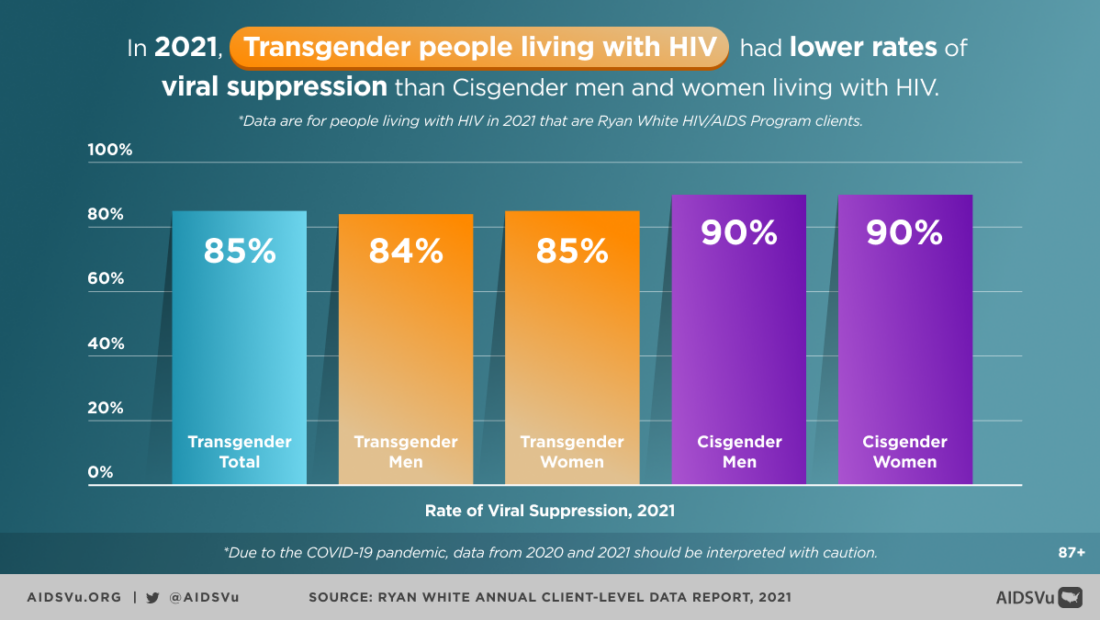
The HIV Continuum of Care
The HIV care continuum is a public health model that outlines the stages of care that people living with HIV go through from diagnosis to achieving and maintaining viral suppression. Guiding an individual through the care continuum is key to helping them achieve viral suppression, which not only helps them experience better health outcomes but also reduces their risk of transmitting HIV to others.
Transgender men and women consistently experience worse health outcomes along the continuum of care than the general population of individuals living with HIV. This is especially true regarding transgender men and women of color. According to data from the Ryan White HIV/AIDS Program, in 2021,
- 90% of men and 89% of women living with HIV were virally suppressed, but only 84% of transgender men and 85% of transgender women were virally suppressed
- 86% of Black transgender men and 81% of Black transgender women were virally suppressed

PrEP Use
PrEP (pre-exposure prophylaxis) is when people at risk for HIV take or receive HIV medicine regularly to lower their chances of getting infected with HIV. The Centers for Disease Control and Prevention (CDC) has estimated that approximately 1.2 million people are at high risk for HIV exposure and could benefit from comprehensive HIV prevention strategies, including PrEP.
According to a 2021 CDC Special Report that analyzed HIV among transgender women in seven U.S. cities, between 2019 and 2020, high percentages of transgender women report a knowledge of PrEP, but far fewer report using PrEP.
- The Special Report found the following when comparing PrEP knowledge compared to PrEP use among transgender women:
- Atlanta: knowledge 92% (use 23%)
- Los Angeles: 92% (27%)
- New Orleans: 92% (36%)
- New York City: 92% (43%)
- Philadelphia: 96% (34%)
- San Francisco: 95% (46%)
- Seattle: 82% (17%)
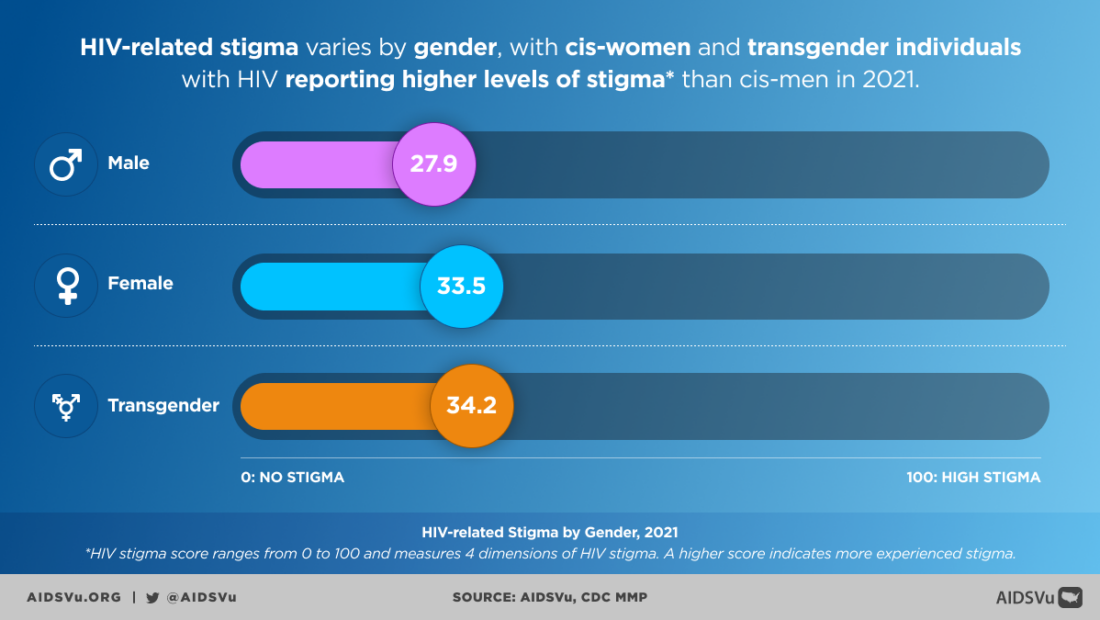
Working Toward Better Transgender Data Surveillance
CDC and local health departments recognize the importance of collecting and disseminating HIV surveillance data for transgender and gender non-conforming populations (TGNC). CDC and local health departments have put forward multiple efforts to improve HIV surveillance data for this population, including revisions in data collection procedures to capture information on gender identity, guidance to health departments on how to collect, interpret, and present the transgender population’s HIV surveillance data, technical assistance and open forums for health departments to discuss best practices for collecting and reporting these data to CDC, as well as ongoing assessments of the quality of the data.
Transgender Data on AIDSVu
AIDSVu currently has limited transgender data exclusively at the city level. That data is likely an undercount, but AIDSVu strives to provide as much up-to-date data as is publicly available at this time and is working to encourage the gathering of more in-depth surveillance data for this population. In addition, AIDSVu participates every year in Transgender HIV Testing Day on April 18, conducting interviews with experts and producing updated infographics on available data.
5 Ways to Use AIDSVu
View local statistics
National-, state-, and city-level profiles including transgender data at the city level.
Learn MoreShare infographics
Infographics presenting insights on HIV in the transgender population.
Learn MoreExpert blogs
Stay up to date with the latest Q&As from experts on transgender data and more.
Learn More
